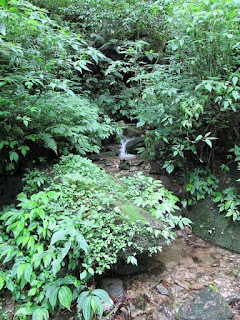On July of 2012, I had the pleasure of meeting Mr. Khagendra Shangraula at
his residence in Kathmandu. Mr. Shangraula is a very well known writer of fiction
and non-fiction. He is equally noted for his political analysis. Below are some
short excerpts from a longer conversion on a wide range of political issues in Nepal
today. To listen to the entire conversation (in Nepali) visit
 |
| Mr. Shangraula |
The failure of the Constituent
Assembly:
As
glimpsed from the outside, the failure of the CA appears to be due to issues
around “identity.” Or, identity-based Federalism. In reality, however, a
conflict between federalism and anti-federalist forces is at the heart of all
of this. The question of identity is only superficial, but the actual substance
is Federalism itself. Certain forces seek recognition of identity; those who
have been historically marginalized; those who have lost their land; and those
whose culture and language have been suppressed seek federal provinces named
based on population, language, geography and history.
The present scenario:
There
is a struggle between two forces: one side questions whether Nepal should become
a federation, and the other seeks to maintain the status quo. Pertinent to this
discussion is whether there should be equality and justice for all. Should
Nepal finally address politically, the concerns of groups that have been
historically marginalized? Nepal is still at a crossroads on these issues. The
group that has enjoyed the privilege of power for an extended period does not
want change. One side does not want Federalism. The other side will not be
happy without it. That is the current conflict, in a nutshell. My own thoughts
on this is that either Nepal will choose federalism and the marginalized groups
and areas will get the justice they deserve. Failing this, Nepal will once more
find itself at war. I cannot tell who will start the war, but the conflict
could be between Hill vs. Terai or Janajati vs. Brahmins.
 |
| Guava tree in Mr. Shangraula's garden |
The weakness of the Federalist
forces:
The
main weakness of the Federalist forces was they did not define very well what Federalism
would look like according to the makeup of Nepali society. When Federalist
forces started proposing names such as Limbuwan and Khambuwan, the anti-Federalists
made it an issue and gave it the colour of ethnicity. (They said) in Limbuwan
province Limbus would have hegemony. Similarly in Khumbuwan, Rais would etc.
But in fact Nepal is a multicultural society and the country is composed of a
diverse group of peoples. There is not one single group that makes up a
majority. Once we go into Federalism, there will be elections. Let us take an
example of the Limbuwan province. In an election the Limbus would themselves not
be a majority. Hence, in order to form a government, there would have to be
collaboration between different forces. Federalism has not been defined in that
way. The Federalist forces did not make the abovementioned things clear and the
anti-Federalist forces took advantage of this by claiming that it would lead to
hegemonies of certain groups, with the country eventually breaking into pieces
etc.
On anti-Federalist forces:
There
are two kinds of anti-Federalist forces. One who sincerely believes that naming
federal provinces based on identity could lead to instability. A second group
is taking advantage of this first group’s sentiment and want to stop the entire
process of Federalism.
The work required of the Federalist
forces:
The
Federalist forces have to explain what Federalism means to the general public.
They have to explain that under Federalism all groups would have the right to
vote and live freely. Otherwise it will be very difficult to implement such a
system, because anti-Federalist forces are very strong. Examples include the
judiciary system, the top brass of the Nepal Army, the majority of the
governmental bureaucracy, and many other areas that are dominated by
Bahun-Chhetris are all for the status quo. Hence there are strong forces
against Federalism.
The Maoist-split:
The
first effect of the Maoist split will be that their bargaining power will be
reduced. Secondly, division will affect their morale. Thirdly, it will also
depend upon what the Baidya faction will do. When the Baidya faction split,
they said that they would take a revolutionary role. But looking at their
activities after the split, they have not been doing what they said they would.
They are roaming around Kathmandu. Sometimes they go to see the President. At
other time, they are vandalising some education institutions to show their
identity saying that they are different. If the peace process and the
constitution process move ahead according to plan, then the Baidya faction
cannot accomplish anything. If the peace and constitution process does not move
forward, then the disaffected people might begin following the Baidya faction.
The
Maoist insurgency lead to around 15,000 deaths, with many people still missing
and many others scarred from bullets. Because of this the Nepali society is
very tired. Just because you declare a war does not mean that people are going
to follow in line to die for you. The biggest question among people is what would
be the fruit of such a big sacrifice? Without people getting an answer to that
question, there will not be another war.
For more info on related topics:

















